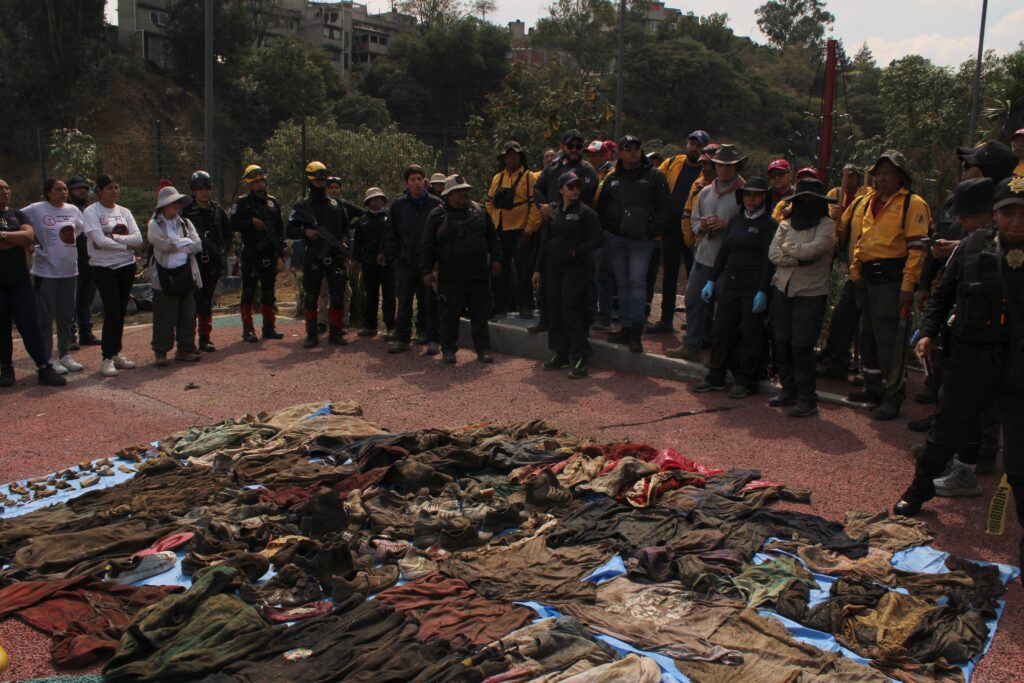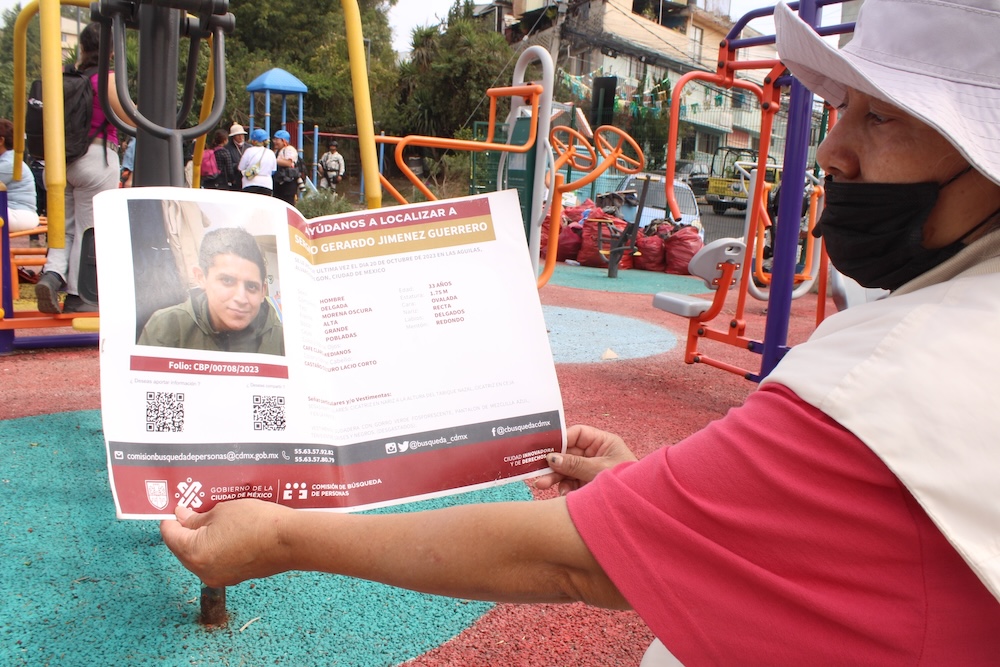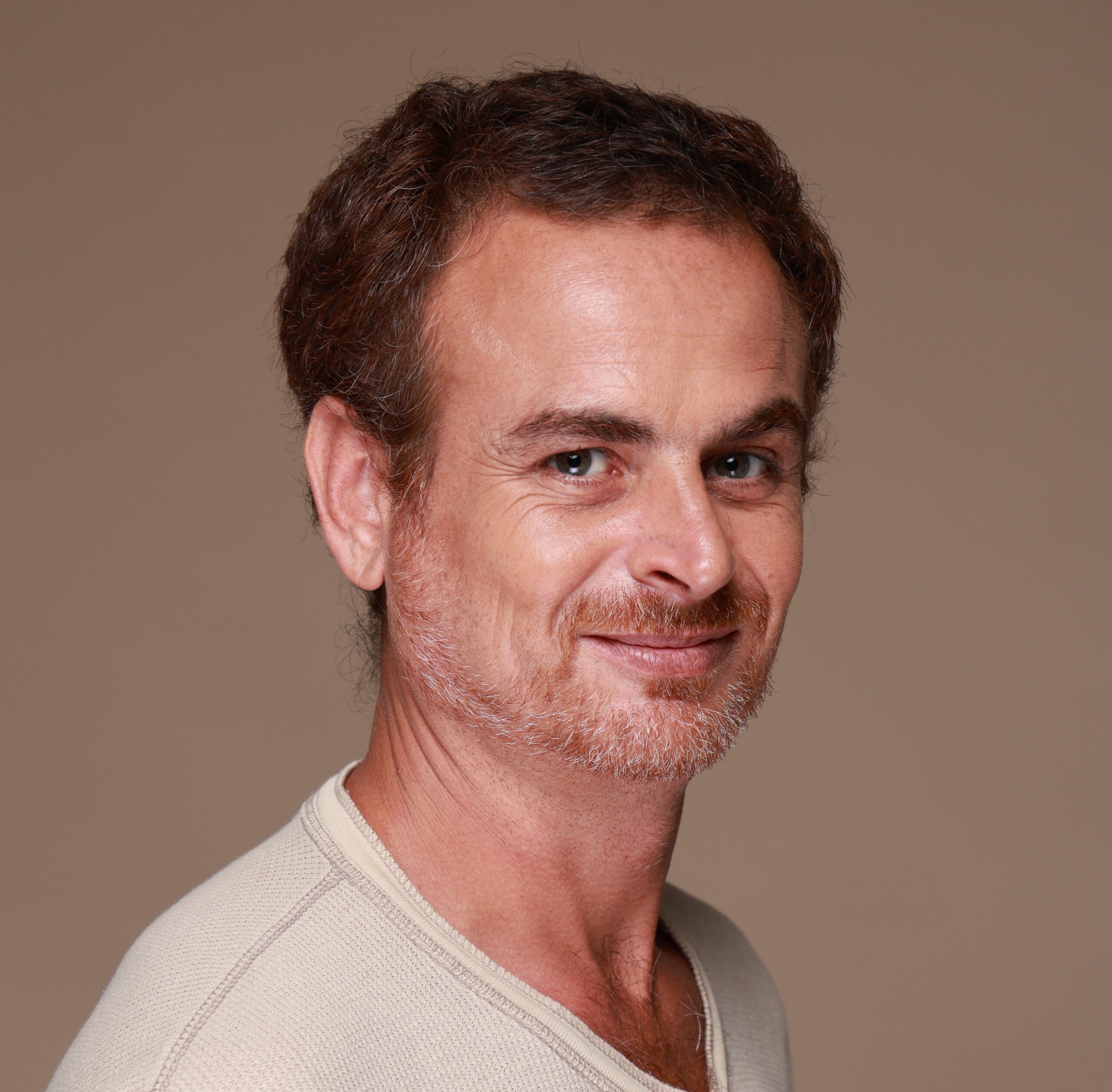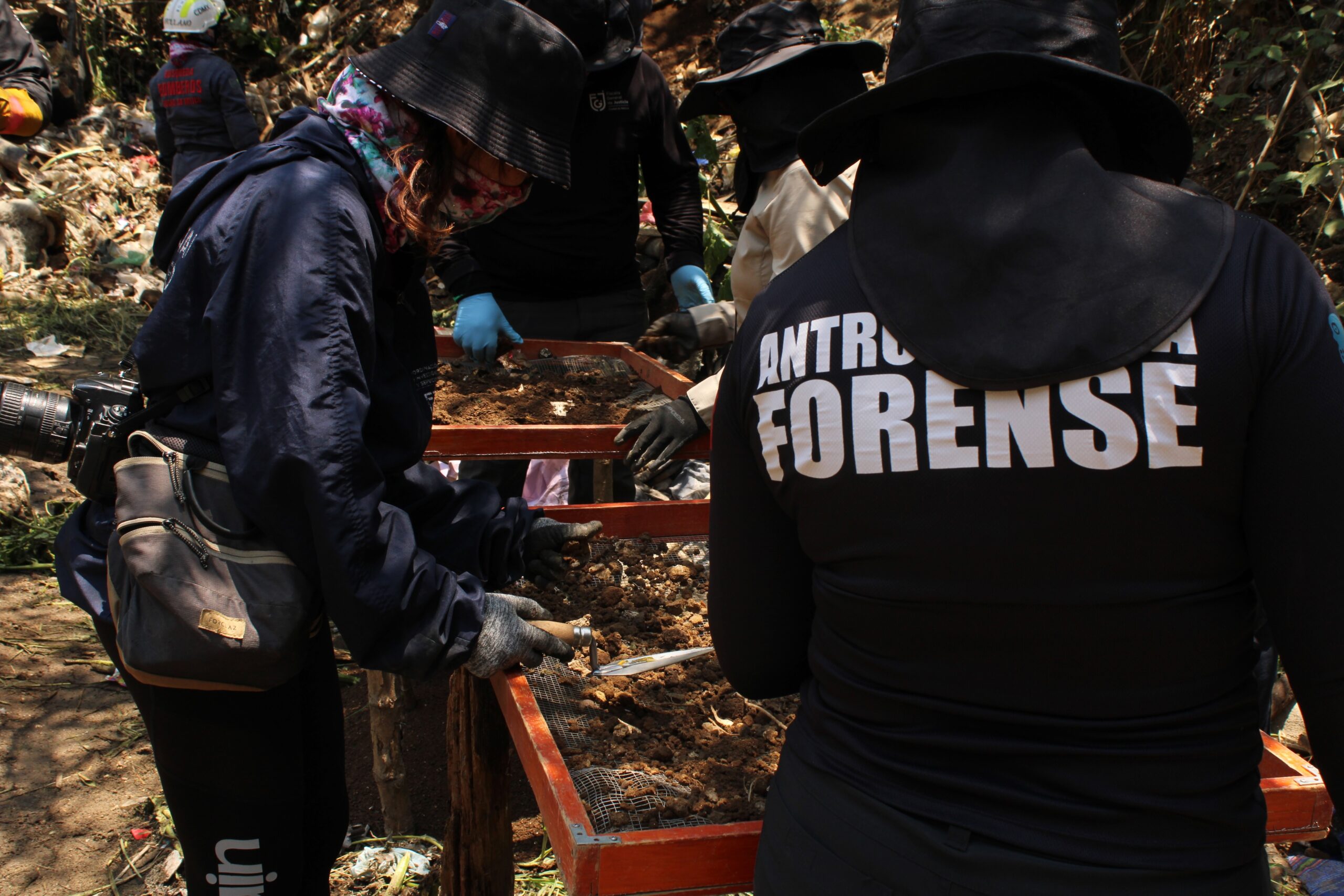MEXICO CITY—Every year, on September 26th—the anniversary of the forced disappearance of 43 students in Iguala, Guerrero—families of the victims and students commemorate the crime and renew their call for justice. This year, protesters staged a march in Mexico City to demand progress in the investigation of the case, including the release of more than 800 documents that Amnesty International deems key to clarifying an incident that has remained unresolved for eleven years.
Their fight is not isolated. A day before the anniversary, protesters drove a truck against the gates of a military base in Mexico City and set the vehicle on fire. Days earlier, a group of activists disrupted a military parade in Acapulco, in the state of Guerrero, to demand action on the case as Mexicans celebrated their Independence Day.
In a nation that for decades has battled organized crime and its effects, forced disappearances have become a national issue: More than 125,000 people have disappeared since the 1950s, and from 2007 to 2023, authorities have found almost 5,700 clandestine mass graves throughout the country. The crisis escalated after 2006, when the government’s militarized “war on drugs” splintered cartels and fueled cycles of violence. According to government data, the vast majority of the disappeared have vanished over the last two decades, turning what were once isolated cases into a nationwide epidemic.
Analysts and scholars point out that many of the disappearances are associated with organized crime, as drug cartels continue to extend their reach and influence across the country, resorting to forced recruitment and concealment of homicides. However, documented instances also point to the involvement of state authorities: Their collusion with criminal networks, a culture of impunity that has been hard to break, and high-profile discoveries—such as the government cover-up in the Guerrero case—have brought this reality into sharp relief.
In response to the crisis, President Claudia Sheinbaum declared the problem “a national priority” and announced new government actions to address it, including “recognizing the truth of the facts and doing justice for victims and their families.” However, since Sheinbaum took office in October 2024, more than 14,800 people have disappeared—about 40 per day.
That daily rate is almost double Andrés Manuel López Obrador’s average of 23.5 per day between 2018 and 2024, nearly three times Enrique Peña Nieto’s 14.3, and more than five times Felipe Calderón’s 7.2. While part of the increase may reflect more rigorous reporting of the cases, the figures underscore that the crisis has accelerated rather than slowed under Sheinbaum’s government. As she ends her first year in office, the pressure mounts to turn justice into more than a symbolic promise.
Lack of institutional support
Dr. Ignacio Santiago Pérez went to work one morning in the height of the COVID-19 pandemic and never returned home. After calling his clinic in Mexico City, his wife, Carolina Espinosa, learned that he had left at the usual hour. His colleagues called hospitals all over the city but found nothing. Espinosa went to her local prosecutor’s office, only to be directed to another one, where her report wasn’t processed until 4:30 a.m.
Five years later, Espinosa still regrets how, unsure of what to do, she spent those first hours, which experts call crucial to finding someone who has vanished. “No one told me where to go,” she said. “I walked alone.”
Espinosa is far from alone in her desperate search for answers—or in her demands that the government do more to help people find their loved ones. In fact, many relatives of the missing have long complained about getting little or no support from the government, and activists have banded together to search for people—sometimes disappearing themselves.

Although Sheinbaum has said it’s her government’s “duty to support” relatives of the disappeared, many activists and advocates for the families say officials have not confronted the depth of the problem. Much of the system is in disarray, with overloaded institutions and a reluctance among officials to acknowledge the depth of the crisis.
“I believe it’s the nationwide security crisis,” said Alejandra Ortiz Díaz, a lawyer who works with the Mexican NGO Citizens in Support of Human Rights based in Monterrey. “Prosecutors simply can’t handle the workload. The country is becoming more militarized, but that hasn’t solved the problem,” she told AQ.
Authorities argue that they’re taking action. While Sheinbaum was mayor of Mexico City, for example, the government expanded its response apparatus, creating a system of rapid alerts, search brigades, and forensic teams. During her tenure, the capital city halved its homicide rate; however, analysts argue that replicating this success at the national level would require sweeping judicial reforms and improved bilateral relations with the U.S.
Small improvements, steep challenges
In April, Mexico City officials launched a five-year plan, costing approximately $14 million, which focuses on building up forensic teams and enhancing search technology, including drones and a centralized DNA database. The city is also overhauling how it tracks cases, said Luis Gómez Negrete, the new director of Mexico City’s Search Commission.
“We’re not necessarily seeing more disappearances—we’re seeing a system that’s finally starting to report them more transparently,” he told AQ. “That change alone can make it seem like a spike.” The new tracking model can group cases by pattern or region which “allows us to identify trends and prioritize high-risk zones,” said Gómez Negrete.
The city’s plan also includes a centralized registry that merges police, prosecutor and commission reports; a simplified way for families to track cases; and multiagency units that can mobilize quickly. The city also designated high-risk zones with histories of disappearances. “These may sound like bureaucratic tweaks,” said Gómez Negrete, “but they change everything. If we don’t organize the search effort, we’ll keep missing connections, and families will keep doing the work alone.”
The authorities face steep challenges at many levels. Some of the new measures have generated controversy, including a law approved in July that will create a national biometric identity system. Critics, including many relatives of the missing, argue that such a system would not address the crisis but instead would create a means for mass surveillance, while supporters say it would help the authorities, families and institutions better coordinate and conduct rapid searches. Either way, a new tracking system does little to address the institutional challenges at the heart of the crisis.
In fact, many forensic labs face a case backlog, police databases are often disorganized, and agencies still struggle to coordinate. A 2025 HumanRights Watch survey found that just 17% of intentional homicide cases from 2010 to 2022 led to arrest warrants or prosecutions. These longstanding problems have left critics of the government and many relatives of the missing deeply skeptical. The new actions appear largely cosmetic, and officials remain too reluctant to investigate and prosecute their own. So, search collectives and families have become central to locating missing people, filling in the systemic gaps in state action.

“Authorities only review protocols. I’m not sure they truly care,” said Paulina Rodríguez, an anthropologist and a human rights worker who recently joined a search in Álvaro Obregón, Mexico City. “Access to justice is something we fight for in ravines and trash dumps, not something the state gives.”
A perilous search
So far, the government’s approach has produced limited results. Some families have seen minor improvements in responsiveness and protocols, but they argue it still isn’t enough. The tangible changes that Sheinbaum promised as a national priority have yet to materialize. Now, the Mexican government faces mounting pressure from the U.S. administration to curb organized crime, even threatening military force. Meanwhile, for the families of the disappeared, the search never stops.
After Ignacio Santiago Pérez—the doctor who disappeared during the pandemic—never came home, life changed for his wife. She no longer sets the dinner table for two, a routine she had clung to for years after her husband disappeared. Instead, her days revolve around rituals of absence: checking case files, tracing GPS points and joining search groups in ravines and dumps.
“Even if it’s just a piece of him,” she said, “I want to know where he is.” Long ago, she was able to glean a few clues by checking his history on Google Maps from the night he went missing. She found a final ping from a cell tower in southern Mexico City, and CCTV footage that showed the doctor leaving work, parking briefly, and then turning left, away from home.
Five years later, that remains her last sight of him.






